Trident Concepts Combative Pistol Level One AAR
Trident Concepts Combative Pistol Level One AAR
This past weekend, I had the privilege of attending the Trident Concepts Combative Pistol Level One course in Bastrop, TX.
I’ll start this off by saying this was by far the most helpful block of pistol instruction I’ve ever attended. I mean that not to discredit any instructors I’ve trained with previously, but to say that this course was my “Ah hah!” moment in my pursuit to better my pistol skill-set.
Trident Concepts
Jeff Gonzales, President of Trident Concepts and our instructor for the weekend, asked each student at the beginning of the first day, what they were here for. He wasn’t looking for some blanket statement like I just made above “to better my pistol skill-set.” He wanted specifics.
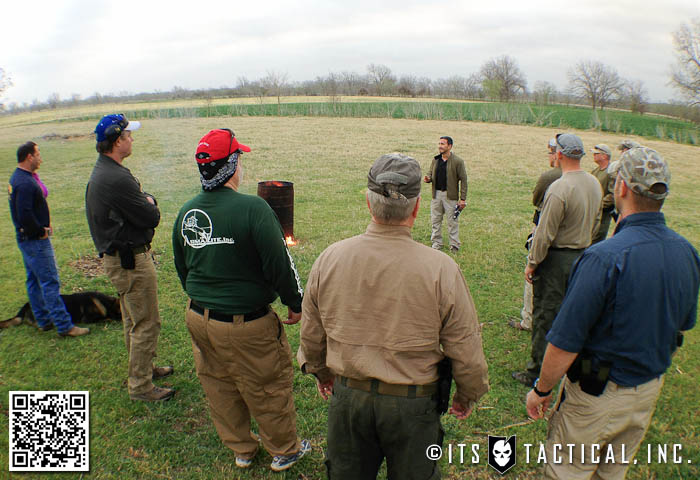
My answer to him was to be more consistent with my shots and to hone my implementation of the fundamentals. I’ve taken quite a few shooting courses in the time since ITS was founded and even a few before, but in that time, the majority of my training has been with rifle.
I’m by no means an expert with a rifle, (I hate that term by the way) but I consider myself to have quite a bit more skill with a rifle that I do with a pistol. It’s been my goal for this year to change that. I’d been wanting to take a course from Jeff Gonzales, President of Trident Concepts, for quite a while now. I was thrilled when I bumped into him at SHOT Show and we had a chance to discuss coming out to one of his courses.
I’ll say right now that my driving factor to want to attend Jeff’s courses is not the fact that he’s a former Navy SEAL, but because of the professionalism and dedication I’ve always respected in everything I’ve heard about him both personally and professionally.
This month marks the 10th year that Trident Concepts has been educating the industry and it was great that our Pistol One course took place during the mark of their first decade in business. I truly don’t know why it’s taken me this long to attend one of their courses.
The Warrior Mindset
The first day of our two-day course started out with a good hour or so of fantastic lecture. It began with the basis for who TRICON is and where their curriculum came from.
Lessons learned from the battlefield and personal experience of their instructor staff makes up the foundation for what defines. They’re fanatical about standards as a tool to gauge progress. Without standards there’s not way to recognize if a technique is working or not.
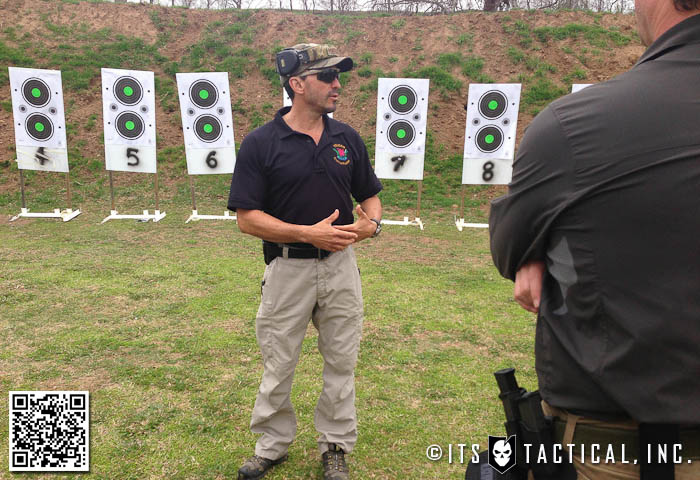
Does it work? Is it necessary? Will it work under stress? Those are the three questions you should ask yourself during the evaluation process of any new technique, according to Jeff. I wholeheartedly agree. The last question “will it work under stress,” is key because of the high stress conditions you may find yourself in one day when confronted with a threat. Jeff stated that 80% of his job is to eradicate training scars (bad habits) and that was certainly true with me, as you’ll read further in the article.
Another poignant principle that Jeff follows is that he doesn’t care where you come from, all he cares about is meeting the performance standards. The question he told us all to ask ourselves was “What will you do to increase your lethality on the battlefield?” This brings us to warrior mindset, which as Jeff described, isn’t necessarily confidence. Confidence can be a false bravado, but competence equals confidence.
Proper mental conditioning is extremely important because who sees who first in an engagement can be the determining factor for the outcome. Some of you that are paying attention should hopefully be thinking about situational awareness at this point.
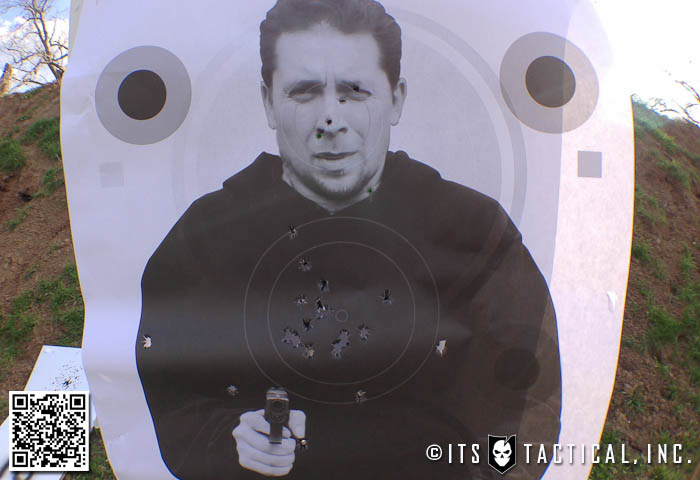
We addressed situational awareness by discussing the Cooper Color Code, which I’ve mentioned previously on ITS in Closing Distance: Personal Space and Body Alarm Response. While I won’t repeat the color code here, it’s a good thing to research and note that you can’t go around on high alert all the time.
Shock threshold was another interesting concept I haven’t heard much in detail about. From what I understand, it’s the measure of time from the initial shock of an event to the point at which you react. If you don’t train that aspect into your training, you’ll never know how you’ll react.
Factors that can affect shock threshold are physical fitness, age, experience (more familiar, less shock threshold) and genetics. Remember, strong people are harder to kill.
We also went over other threat recognition tools like the OODA Loop (Observe, Orient, Decide and Act) and the PADE Cycle (Perceive, Analyze, Decide and Execute), which Jeff seemed to favor.
- Perceive – Knowing what danger looks like.
- Analyze – Remove self doubt “We live in a good neighborhood, it could never happen here.”
- Decide – Your response selections should be kept to a minimum.
- Execute – Do so with coolness and without hesitation.
In turn, it’s important to remember the maxim followed in close quarters battle; speed, surprise and violence of action.
The Combat Triad was the next topic of discussion for our class and revolved around four points on a pyramid, taking into consideration that a pyramid uses three points as its base. On those three sides are manipulations, marksmanship and tactics. Mindset is the top of the pyramid and reigns supreme.
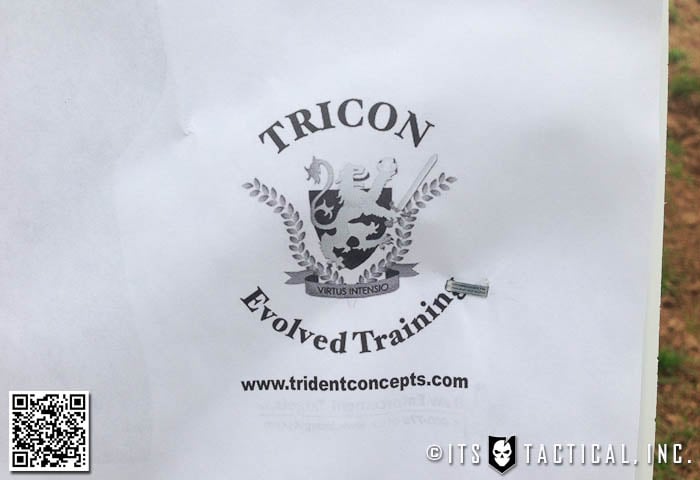
Essentially these four topics are what TRICON considers the most important aspects to bring to the battlefield. Without a solid base of manipulations, marksmanship and tactics, your mindset can’t be solid. This also goes right along with what was mentioned earlier, competence equals confidence. Confidence without that competence (solid base) is false bravado.
From there we moved into personal protective directives and that these need to be developed on your own. This is simply asking yourself the question “Am I willing to protect life by taking life?” This answer in turn should be communicated to your intimate circle; family, friends, etc. They deserve to know who you are and what to expect should a situation occur.
There will be three fights that you’ll have to go through in a gunfight. The mental fight that you should have already gone through with yourself, knowing how you’ll handle a situation. Next is the real fight and finally the fight for your civil liberties.
Jeff also shared his formula to creating a solid technique as a foundation. This includes having a maximum certainty of success, maintaining simple and economical movements, honing your situational awareness and minimizing your response selections.
This all goes back to training and why we’d all come to the TRICON course. Jeff mentioned that the reason The Teams are so effective is due to the effort they put into rehearsals; movement becomes almost instinctual. Remember the old adage that you don’t rise to the occasion, you default to your level of training.
Course Objectives and Equipment Used
Teaching the competence that will instill confidence is what TRICON’s Combative Pistol is all about. During the two days of instruction, we were introduced to what they refer to as “the combative fundamentals forging process for the tactical employment of a pistol in high-risk situations.”
I was grateful to receive not only a solid refresher on fundamentals from the weekend’s instruction, but an eye opening introduction to new concepts (to me) and why they were advocated by TRICON. These were reinforced with repetitions and drills to aid in forging correct technique and marksmanship.
We shot close to 1,000 rounds during the weekend at ranges of 3, 5, 7, 10, 15 and 25 yards. This was also my first class fully using a Glock 19 instead of my Sig Sauer P225 or P226 that I’ve been used to. I was truly thankful to not have to deal with double action shots and have come to appreciate that about Glocks lately.
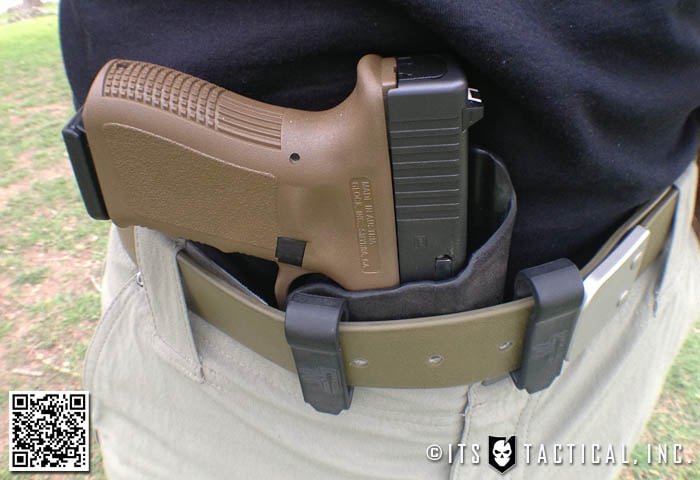
During the course I ran the new Haley Strategic/G-Code Incog Apendix Holster clipped to my Liger Belt. I’ve been wearing the Incog daily for the past two months and it worked out great for the class. It’s not as comfortable for me to carry daily like the Raven Concealment VanGuard II, simply because there’s more material.
The Incog allowed me to reholster easily, although one initial thing I don’t like is that it’s not capable of being canted. I’ve tried adjusting the height on the clips a bit, but it prints more than the VanGuard for me because of its inability to cant. I do truly like the holster though and want to get more time with it before I put together a full write-up.
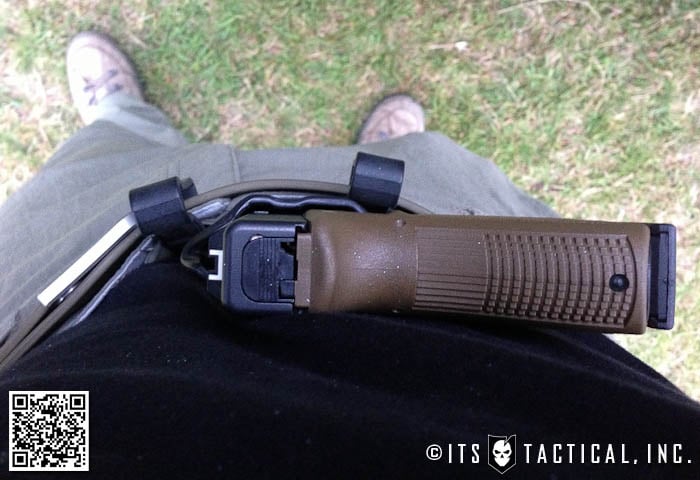
One thing I wanted to do with this course is to run it like I carry. What I mean by that is that I wanted to run apendix carry, just like I’ve been carrying lately and not have anything other than the essentials. I had an EDC Trauma Kit in my back pocket and used a combo of options for carrying extra mags, including cargo pockets. I’ve been questioning people’s motivation lately for wanting to run battle belts and other drop leg holsters when they train. I’m guilty of it it too in the past, but why not train like you fight? If you’re active duty Military or Law Enforcement, I fully understand running your kit like that. For me, I don’t put on a battle belt everyday, nor would I if anything went down. For me, it’s using a pistol to fight to a rifle and using that to fight to a better position. Sorry for the rant.
Drills and Lessons Learned
One of the initial drills we practiced is one where you have a buddy balance an empty casing on top of your front sight post while you have a clear and safe pistol fully extended. When your buddy removes their hand from the casing, you squeeze the trigger. Any deviation of your trigger press immediately causes the casing to fall and is a great visual tool to address not pressing the trigger straight back and improper follow through. As Jeff described, you’re pushing past the point of detonation.
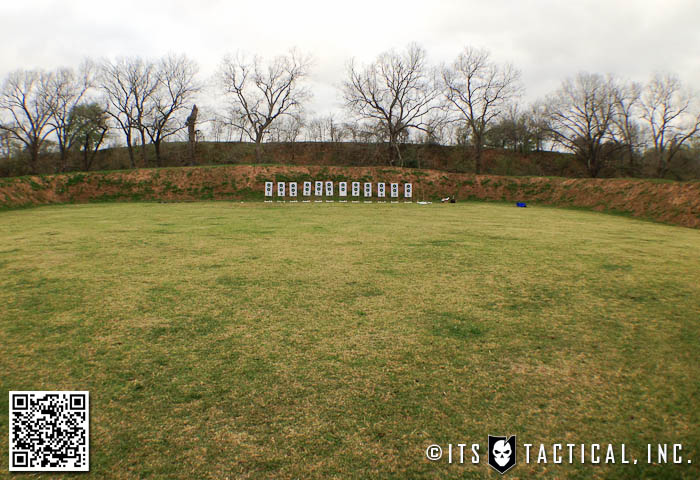
We also practiced this same drill, but after we achieved pulling the trigger while the casing stayed put on the front sight, our buddy would remove the casing, rack the slide and replace the casing again. We’d then reset the trigger and squeeze again. This two-step drill had to be completed in both stages completely five times before we moved on.
What Jeff stressed is follow through after the shot, recovering the gun, putting your sights back on target and then and only then, resetting the trigger. That tip helped me out quite a bit too. Another great tip was to remember that the trigger is just a lever. Being a lever, pulling on the lower 1/3 of the trigger flat and straight back will give you better leverage and require less effort.
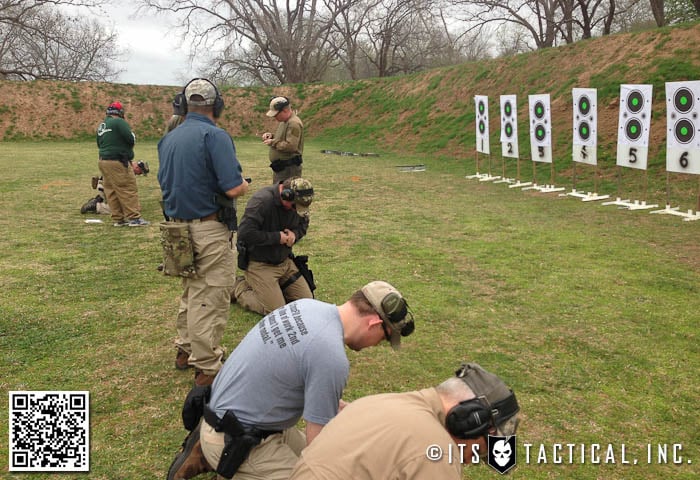
Some of the bigger lessons that I took home from Jeff’s instruction, were his description of shoulder placement. I’ve never noticed before how much my shoulders shrug when I extend to shoot a pistol. Jeff said to picture your shoulder blades trying to pinch a dry erase marker to create a solid shooting platform.
My huge ah hah! moment was when I overheard Jeff telling another student to try squinting his left eye to acquire the front sight faster. Something that this course and Jeff helped me identify on the first day was that I chase my focus on my front sight. My brain just seems to have issues quickly acquiring focus on the front sight without shifting focus to the rear sight and the target I’m shooting at.
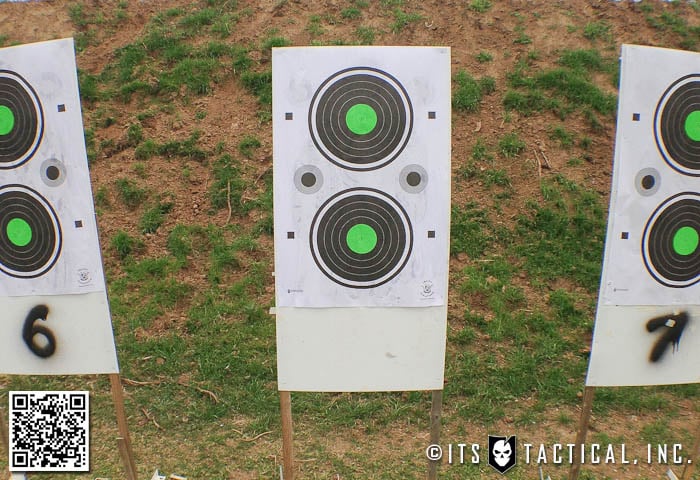
By simply squinting my left eye (I’m right eye dominant) quickly, my brain immediately recognizes where I need to focus. It’s weird to write it out, but for me, it just works. I’ve never really tried that before and have always heard to keep both eyes open to avoid tunnel vision and maintaining situational awareness, I look at it like this. Those things are very important too, but I’m ultimately responsible for each bullet and where it goes. To me quickly closing and reopening my left eye and getting a crisp sight picture before firing, is worth the brief possible loss of the other things.
When I compare the way I was shooting on day one versus using the squinting method I was using on day two, there’s no comparison. It was a night and day difference for me.
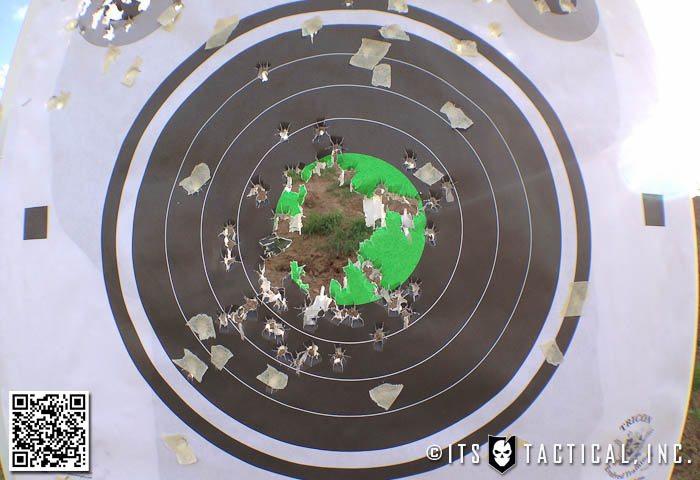
Many other drills we practiced throughout the weekend were variations of drawing from the holster and the low ready at multiple distances. We worked on malfunction clearances, reloads and even shot some steel on the last day. The culmination of the course was a few different graded evolutions that comprised the final score at the end of day two. We also had a cool competition towards the end where we raced another student for hits on an 8″ steel circle target at 15 yards.
Notes
While this AAR could go on for pages more, I’ll end it here and let you know that if you’ve ever considered a course from Trident Concepts, or even if you haven’t, I wholeheartedly recommend looking into attending a course.
As I mentioned in the beginning, out of all the pistol instruction I’ve been too, I hold this course at the top of my list. Through Jeff’s ability to diagnose issues and offer suggestions, I was able to fix some problems I’ve always had when it comes to fundamentals and put me on the track to success with my consistency. That is worth more to me than I can ever put into words.
Remember to ask yourself what your goal is and how you’ll achieve and measure success.






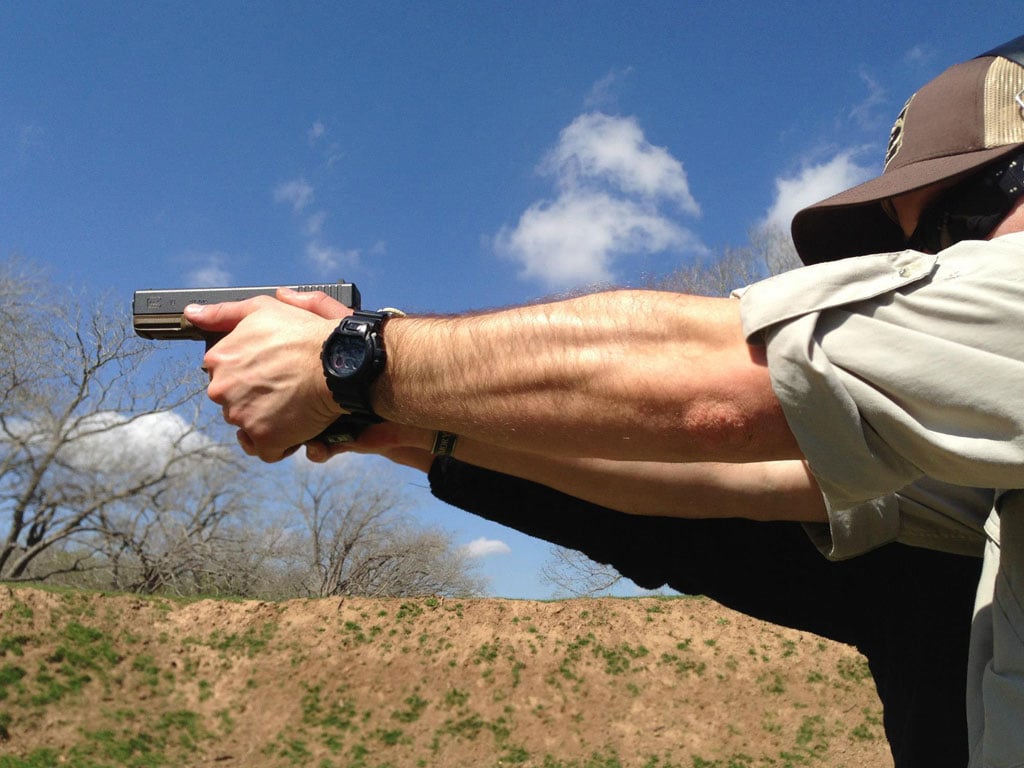
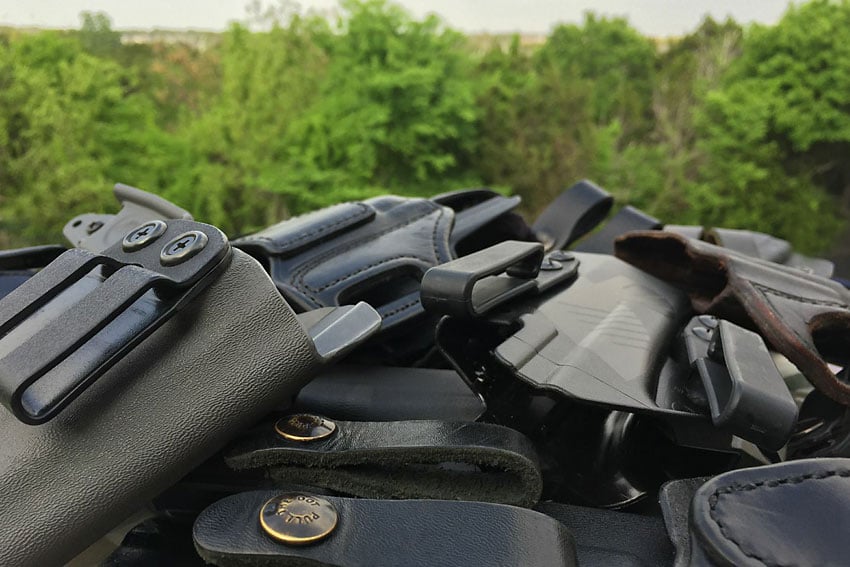

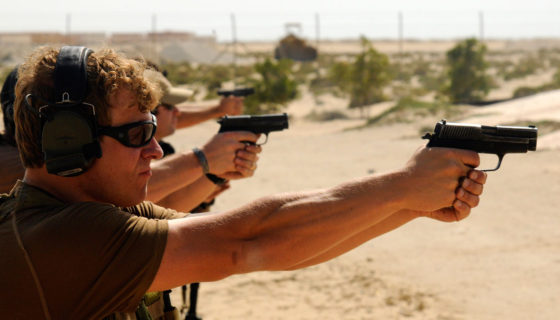

Discussion